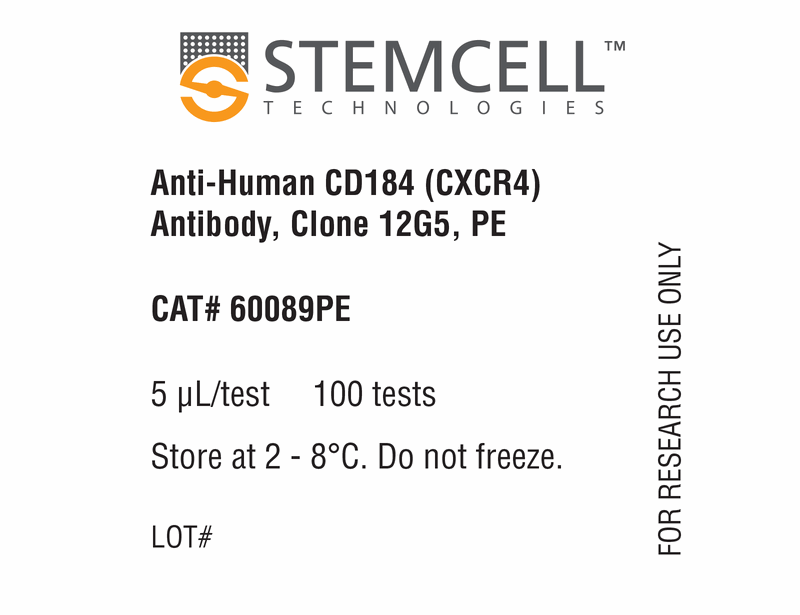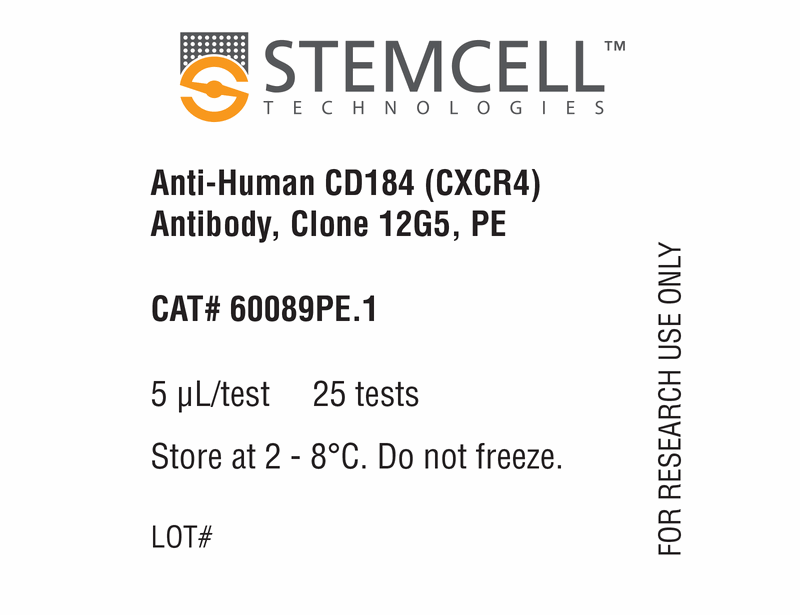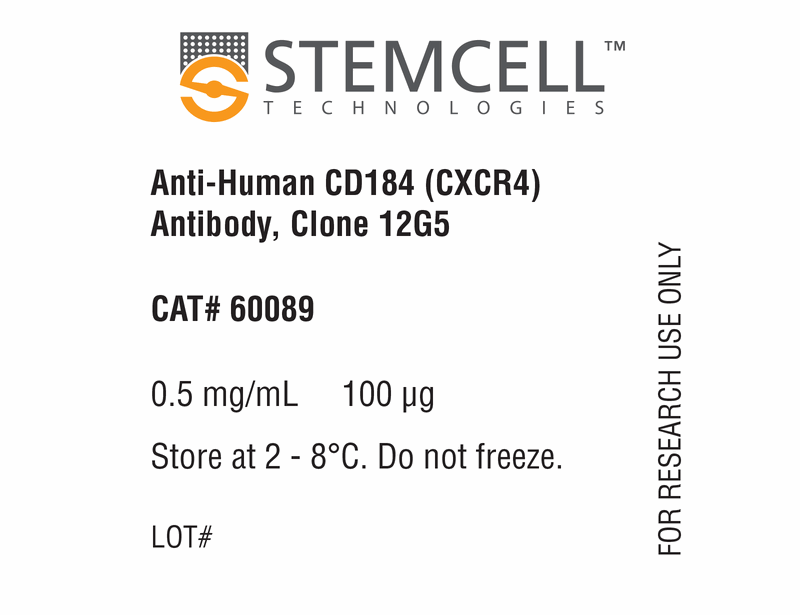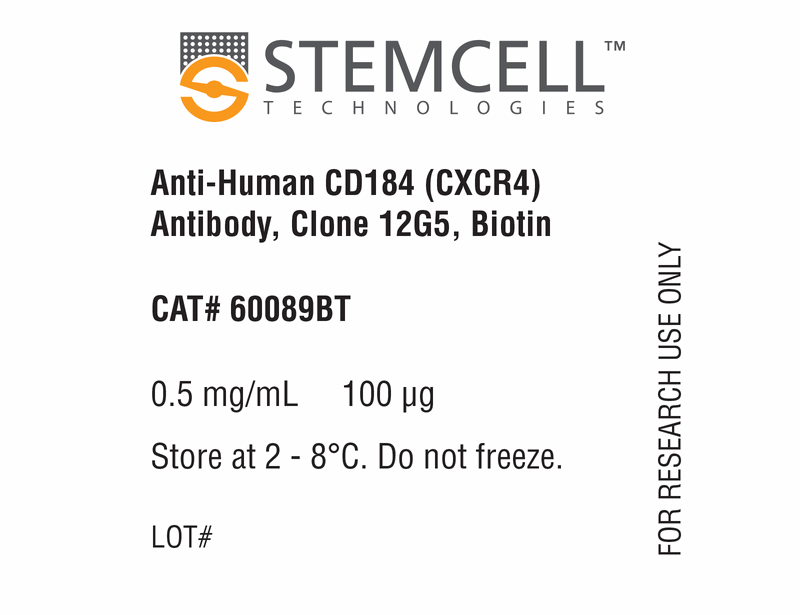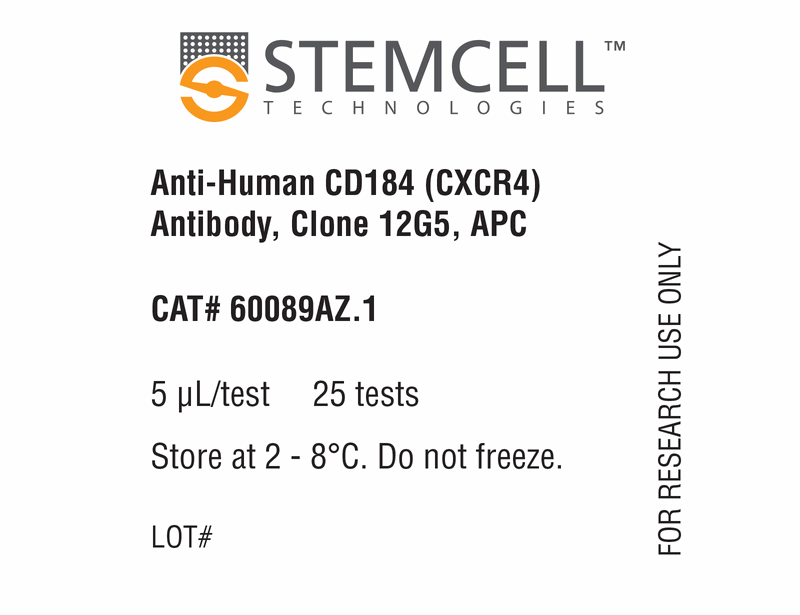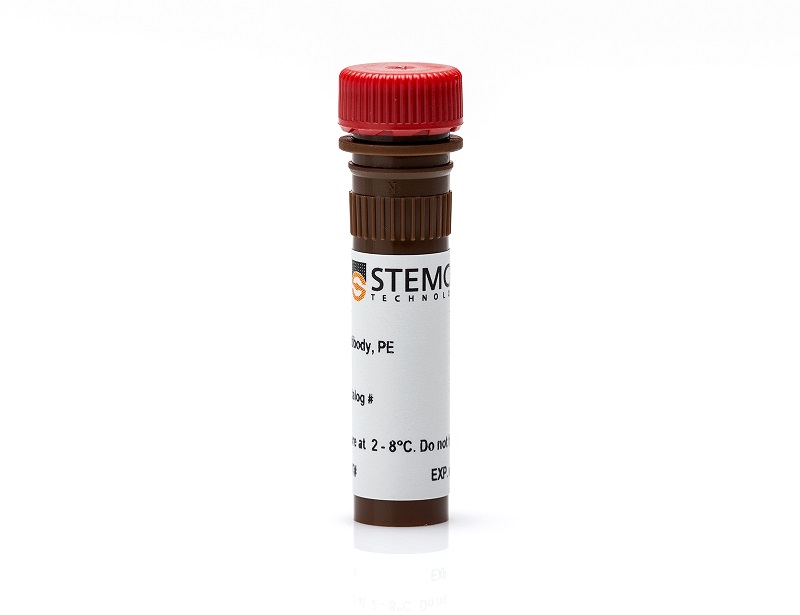Anti-Human CD184 (CXCR4) Antibody, Clone 12G5
| Document Type | 产品名称 | Catalog # | Lot # | 语言 |
|---|---|---|---|---|
| Product Information Sheet | Anti-Human CD184 (CXCR4) Antibody, Clone 12G5 | 60089 | All | English |
| Product Information Sheet | Anti-Human CD184 (CXCR4) Antibody, Clone 12G5, APC | 60089AZ, 60089AZ.1 | All | English |
| Product Information Sheet | Anti-Human CD184 (CXCR4) Antibody, Clone 12G5, Biotin | 60089BT | All | English |
| Product Information Sheet | Anti-Human CD184 (CXCR4) Antibody, Clone 12G5, PE | 60089PE, 60089PE.1 | All | English |
| Safety Data Sheet | Anti-Human CD184 (CXCR4) Antibody, Clone 12G5 | 60089 | All | English |
| Safety Data Sheet | Anti-Human CD184 (CXCR4) Antibody, Clone 12G5, APC | 60089AZ, 60089AZ.1 | All | English |
| Safety Data Sheet | Anti-Human CD184 (CXCR4) Antibody, Clone 12G5, Biotin | 60089BT | All | English |
| Safety Data Sheet | Anti-Human CD184 (CXCR4) Antibody, Clone 12G5, PE | 60089PE, 60089PE.1 | All | English |
Data
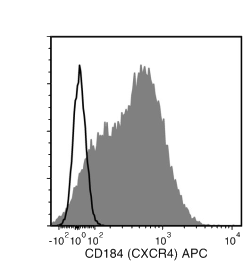
Figure 1. Data for APC-Conjugated
Flow cytometry analysis of human peripheral blood mononuclear cells (PBMCs) labeled with Anti-Human CD184 (CXCR4) Antibody, Clone 12G5, APC (filled histogram) or Mouse IgG2a, kappa Isotype Control Antibody, Clone MOPC-173, APC (Catalog #60071AZ) (solid line histogram).
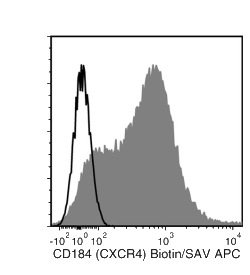
Figure 2. Data for Biotin-Conjugated
Flow cytometry analysis of human peripheral blood mononuclear cells (PBMCs) labeled with Anti-Human CD184 (CXCR4) Antibody, Clone 12G5, Biotin, followed by streptavidin (SAV) APC (filled histogram), or Mouse IgG2a, kappa Isotype Control Antibody, Clone MOPC-173, Biotin (Catalog #60071BT), followed by SAV APC (solid line histogram).
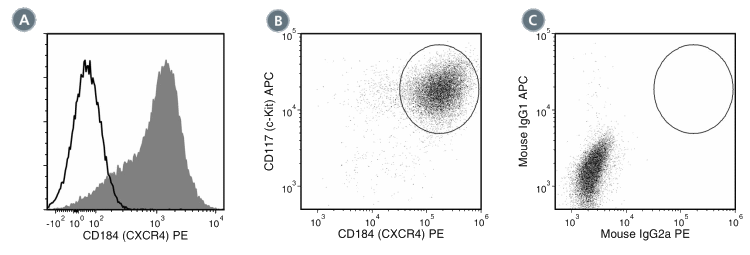
Figure 3. Data for PE-Conjugated
(A) Flow cytometry analysis of human peripheral blood mononuclear cells (PBMCs) labeled with Anti-Human CD184 (CXCR4) Antibody, Clone 12G5, PE (filled histogram) or Mouse IgG2a, kappa Isotype Control Antibody, Clone MOPC-173, PE (Catalog #60071PE) (solid line histogram). (B) Flow cytometry analysis of human embryonic stem (ES) cells following differentiation to definitive endoderm using the STEMdiff™ Definitive Endoderm Kit. Cells were labeled with Anti-Human CD117 (c-Kit) Antibody, Clone 104D2, APC (Catalog #60087AZ) and Anti-Human CD184 (CXCR4) Antibody, Clone 12G5, PE. The emergence of definitive endoderm can be monitored by co-expression of CD117 and CD184. (C) Flow cytometry analysis of human ES cells following differentiation to definitive endoderm using the STEMdiff™ Definitive Endoderm Kit. Cells were labeled with a mouse IgG1, kappa APC isotype control antibody and Mouse IgG2a, kappa Isotype Control Antibody, Clone MOPC-173, PE.
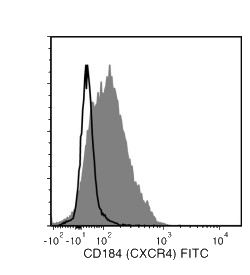
Figure 4. Data for Unconjugated
Flow cytometry analysis of human peripheral blood mononuclear cells (PBMCs; gated on lymphocytes) labeled with Anti-Human CD184 (CXCR4) Antibody, Clone 12G5, followed by anti-mouse IgG, FITC (filled histogram), or Mouse IgG2a, kappa Isotype Control Antibody, Clone MOPC-173 (Catalog #60071), followed by anti-mouse IgG, FITC (solid line histogram).

